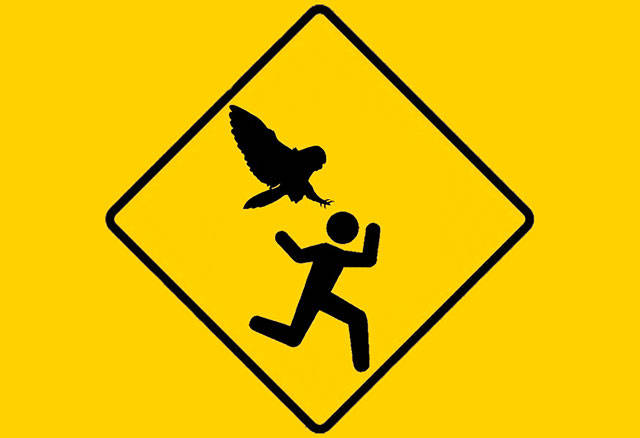Owl attacks aren’t a new phenomenon, and they aren’t confined to Bainbridge Island, either.
A recent article in Outside Magazine, “The Mysterious Case of the Pacific Northwest’s Vengeful Owls,” details how the region has been a target for an invasive species of unusually aggressive owls.
Barred owls are originally from the East Coast, but they have since the late ’90s taken up residence on the West Coast as well.
About 10 years after barred owls were reported on the West Coast, according to Outside magazine, is when attack reports started flooding in. Since 2008, people have been attacked in surprising numbers in urban and rural areas alike, from the San Juans to Seattle to Salem.
Those still brave enough to venture out at dusk have started taking precautions to protect themselves from attacks from above. People have started wearing helmets and bright lights to blind the owls.
It’s not clear why exactly owls are attacking people. Some theorize that in the spring they attack because of the hormones of mating season, and that these attacks continue into the fall because the light mimics that of the spring, possibly triggering some of the same hormones.
The only solution at the moment suggested for these invasive species is removal by rifle. With the barred owl population quickly escalating since the 1990s, they are out-competing spotted owls that are native to the area, according to wildlife experts.
To save the endangered spotted owls, the U.S. Fish & Wildlife Service created a pilot project in 2014 to kill 3,600 barred owls over four years, a move estimated to eliminate barred owls in less than 5 percent of their territory in Washington, Oregon and California.
The removal strategy is an experiment, and if it proves useful to spotted owl populations, the Fish and Wildlife Service may continue the project. According to an update in March 2017 from the Oregon Fish and Wildlife Service, so far 978 barred owls have been killed in Oregon since the start of the study.




